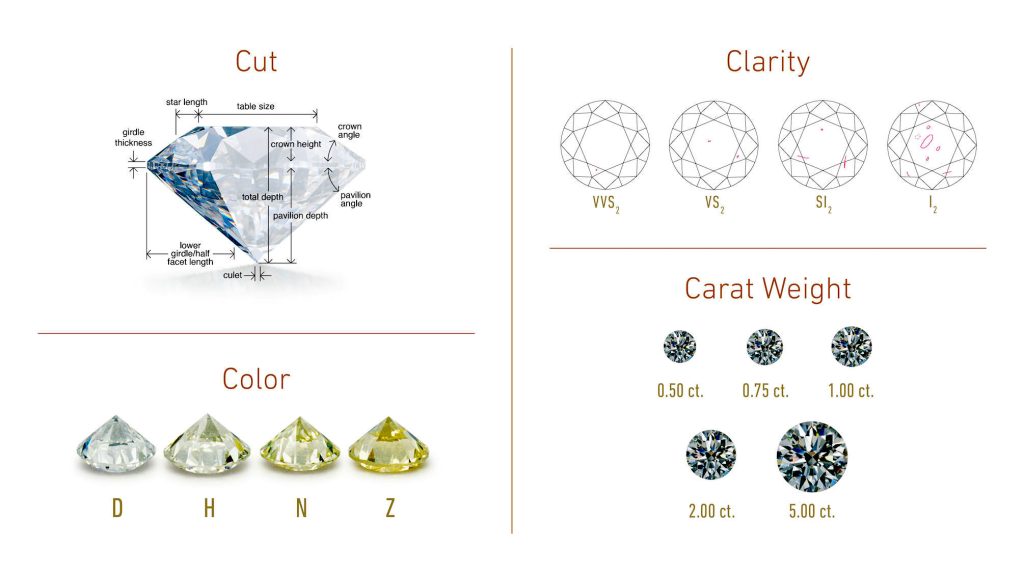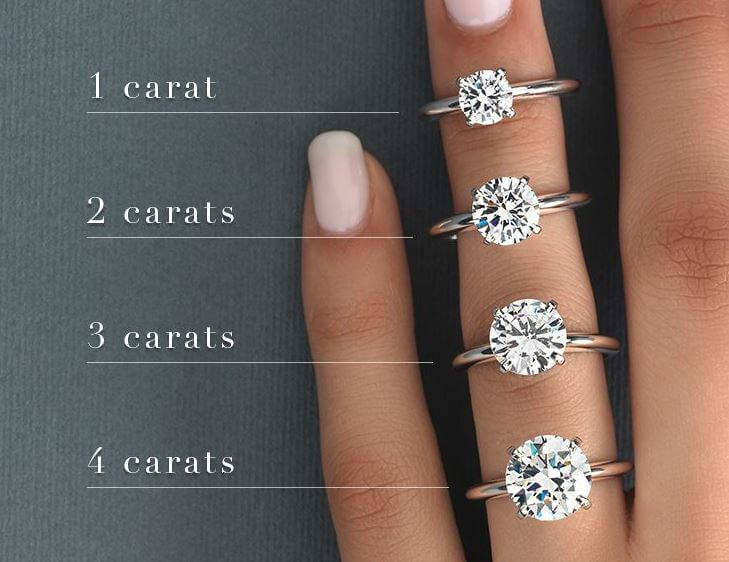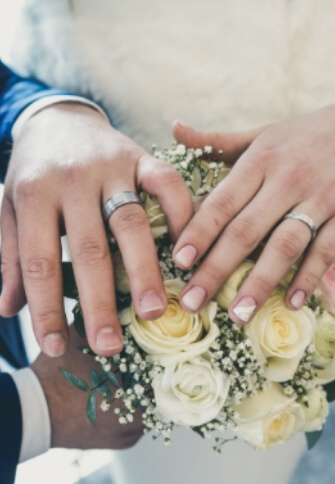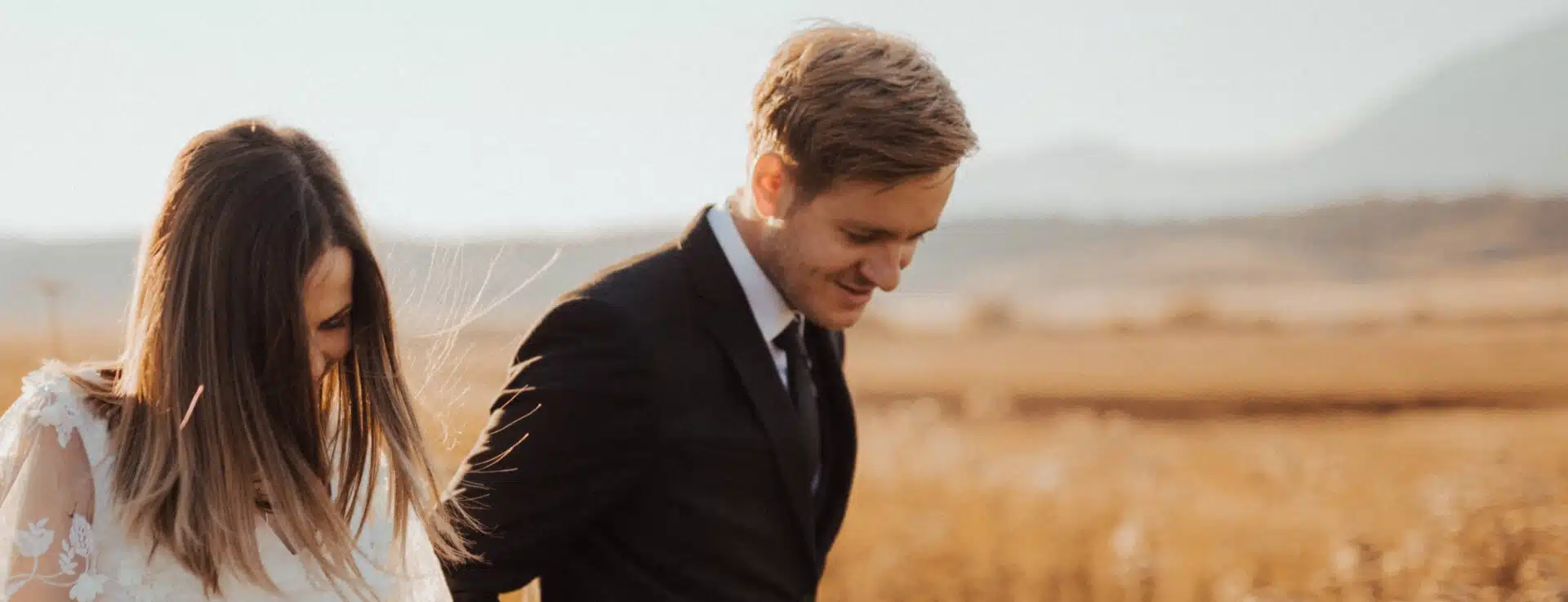
Is comparison truly the thief of joy, or is it the way to finding exactly what your heart desires?
After all, the hardest decision we often have to make is finding the person we want to spend the rest of our lives with and if you’re about to pick out an engagement ring, it seems you’ve done a pretty good job at making that decision already. Maybe the most challenging decisions are who to invite and who not to invite to
ensure everyone still gets along at the end of the day!
When it comes to selecting the Carat weight for your diamond engagement ring, there are many elements to consider that compliment and elevate both 1 and 2 Carat Diamonds – it all depends on what you are looking for. The more you know about carat weight and how it interrelates with the remaining of the Four Cs – Colour, Clarity and Cut, the more empowered you are to truly explore your options and find a perfect stone to match your vision!
One decision that is entirely for the bride and groom, and one that will last a lifetime, is the decision of what diamond will seal the deal for the engagement ring.
Diamonds aren’t cheap of course, the bigger the diamond, the bigger the price tag.
So, this will leave you questioning, “What is the real difference between carat sizes when it comes to diamonds?”.
We’ll start with the 1.5-carat ring firstly.
It doesn’t matter what diamond you choose— regardless of carat, a few things will make the price of the diamond vary, and these are usually determined by colour grade, clarity and cut quality. The 4 c’s.
Colour grades vary from D-Z, with D being colourless in appearance, all the way to Z, which will appear yellowish-brown in tint.
A lot of diamond experts would recommend remaining between the G and H range for the best appearance and value for what you are paying.
It is also recommended that you always want to aim to get a diamond of an excellent cut grade. When you get an excellent cut grade, the diamond will appear to have more fire and brilliance, as well as looking up to 10% larger in size because of the amount of light return!
However excellent cuts reflect almost all incoming light they receive; this lets the diamond sparkle incredibly and appear as beautiful as possible.
What is the difference between 1 carat and 2 carat diamond ?
The difference between a 1 Carat and 2 Carat diamond is purely weight – 200 milligrams to be precise. It’s important to remember that a diamond of greater Carat weight will not possess more brightness, colour, or clarity than a smaller diamond of the same quality.
So, a 2 Carat diamond will weigh more than a 1 Carat diamond, but will it look bigger? Well, that all depends on the cut.
Which Cut Will Make The Most of My Diamond?
The most important of all the 4Cs, Cut is the greatest complimentary element that will elevate and emphasise the appearance of your stone. The Cut of a diamond is all about angles. As the size of a diamond is most often judged by how it looks from the top, or ‘face-up’, the style of a Cut’s angles is what affects the diameter and dimensions of your stone. In other words, the Cut is what makes your stone appear more ample in size.
Diamond Cuts are either round-cut, or fancy cut. Fancy cut diamonds include Emerald, Princess, Oval, Pear, Marquise, Heart and Asscher. The fancy cut diamonds often appear larger than Round Cut diamonds; both Emerald and Princess Cut diamonds will appear bigger due to their elongated shapes. Below, we explore some of the most popular shapes for diamond engagement rings and how they elevate and complement both 1 and 2 Carats.

Diameter
Because a 1 Carat diamond will not necessarily appear half the size of a 2 Carat diamond, it is best to use diameter measurement as an indicator of size. Below are the diameter measurements for each Cut, where you can see that the diameter of a 2 Carat diamond is not double that of a 1 Carat diamond.
For example:
Emerald Cut 1 and 2 Carat Diamond Rings
Emerald Cut suits both 1 and 2 Carat diamonds. The Emerald Cut is a type of ‘step cut’ – rectangular facets that ascend from the crown of the diamond, creating a complex and elegant ‘hall of mirrors’ type effect. A rarer diamond shape, their elongated style is highly flattering on the finger.
The sophisticated Emerald Cut is complimentary stones of varying Carat weight. As this Cut has larger face-up surface, slimmer stones of lesser Carat are more than suitable. So, while an Emerald Cut 2 Carat Diamond Engagement Ring will be a showstopper, an Emerald Cut 1 Carat Diamond Engagement Ring will also look mesmerising.
Diameter
Emerald Cut 1 Carat Diamond: 7mm
Emerald Cut 2 Carat Diamond: 8.5mm
Princess Cut 1 and 2 Carat Diamond Rings
Princess Cut diamond engagement rings are the second most popular choice for brides and suit multiple setting styles. This brilliant square-shaped Cut has a versatile edge when compared to other shapes.
While the Princess Cut has a slightly smaller face-up size when compared to the Emerald Cut, they do have a longer diagonal measurement, giving the visual impression of a much larger stone.
Diameter
Princess Cut 1 Carat Diamond: 5.5mm
Princess Cut 2 Carat Diamond: 7mm
Round Cut 1 and 2 Carat Diamond Rings
The Round Cut diamond has long been a favourite for engagement rings, and it doesn’t look like the trend is going to change any time soon. The Round Cut has been engineered with 58 facets to make the most of the diamond’s natural sparkle, sending light from the bottom of the stone and into the crown. Even if the Round Cut diamond doesn’t appear as large as other Cuts, the brilliance of this style more then makes up for it.
Diameter
Round Cut 1 Carat Diamond: 6.5mm
Round Cut 2 Carat Diamond: 8.2mm
What Setting Makes a Diamond Look Bigger and Brighter?
The right setting should draw attention to the star of the show, your diamond. The settings usually involve 4 – 6 prongs that hold your diamond in place. This setting also allows light to pass through your diamond from its base, or the ‘Culet’, and makes its way through to the surface – the ‘tabletop’ and ‘crown’ of your diamond, creating unequalled brilliance and sparkle. The settings also elevate – quite literally, the diamond from the band, giving the stone prominence on your finger.

Rounded Claw
The most classic of the claw settings, this airy arrangement exposes the sides of your diamond to light, ensuring your diamond is getting every chance to reflect light throughout its facets. This setting also enables the stone to be thoroughly cleaned, another factor that ensures shine and sparkle.
Pointed Claw
When compared to a Rounded Claw, Pointed Claw settings cover less of a diamond’s outline, making the shape of the Cut more prominent, while the slender pointed claws hold firmly to the face of the stone, keeping your precious diamond secure.
Both Pointed and Rounded Claw settings can elevate and increase the natural beauty of 1 Carat diamond rings, particularly 1 Carat solitaire diamond ring designs.
Claw Basket
This detailed, feminine setting is one of the most durable of the prong settings. The diamond is nestled in a basket, and while this does mean less light can enter the stone, the sides of the stone are protected from potential damage. This setting also highlights the surface area of the diamond, making it a stunning choice for halo and Emerald Cut 2 Carat diamond rings.
1 Carat Vs 2 Carat Price
The overall value of a diamond is determined by its quality across all the Four 4Cs. However, it is often the case that the larger the diamond, the larger the price tag. Simply put, this is because it is more difficult to grow or find large raw diamonds in the earth. Combine this rarity with the other elements that come into p
lay – consistent quality across the remaining 3C’s, it is easy to see how cost increases with Carat.
For example a high quality 1 Carat round brilliant cut natural diamond will generally cost between $12,000-$22,000 AUD depending on the Cut, Colour and Clarity. And a 2 Carat round brilliant cut natural diamond of similar quality will cost anywhere from $35,000 AUD and beyond.

2 Carat Lab Grown Diamonds
Lab Grown diamonds have changed the game markedly since their arrival on the market. These beautiful stones have given consumers the ability to purchase their ideal stone without being encumbered by the price tag that comes with natural diamonds.
Lab Grown diamonds are grown in lab conditions that mimic the process that occurs deep in the earth’s crust, and are true diamonds in every sense. While price reflects a diamond’s quality across all the 4Cs, the cost of a 2 Carat Lab Grown Diamond will be significantly less than that of its natural counterpart.
Overall, the difference between a 1.5 carat diamond and a 2 carat diamond is its size, which is not obvious to the naked eye.
A 1.5 carat round diamond measures approximately 7.3mm in diameter, while a 2 carat diamond measures around 8.1mm.
Keep in mind you not only invest in the diamond itself when buying a ring but the setting as well, which can influence how it looks.
While carat weight is something to consider, what really matters when looking for a diamond is finding the one you fall in love with—considering its shape, overall look, and the design of your ring.
Whether a 1.5 carat ring, 2 carat diamond ring, 3 carat diamond ring, a halo setting with added diamond accents, or a cluster of diamonds of equal carat weight, they are all a beautiful choice.
Personal tastes can influence which diamond shapes appear best with 1 carat diamonds, however, some designs tend to showcase the stone’s size and brightness more than others.
The most common diamond shape is the round brilliant cut, which is well-known for reflecting an outstanding amount of light. Hence, it is a popular option for 1 carat diamonds.
The princess cut is a square-shaped diamond with pointed edges and its unique blend of fire and brightness makes it a favourite option for 1 carat diamonds.
While a 2 carat diamond frequently enhances the dazzling traditional diamond shapes, they tend to increase the stone’s size, giving it a bigger appearance and more brightness.
Popular diamond cuts that look best in a 2 carat diamond include The oval cut brilliantly showcases the 2 carat diamond effect. It has a good deal of brightness and fire as well, making it an adored option for people seeking a distinctive and attractive appearance.
The term 4Cs refers to a group of characteristics that are frequently used to assess the worth and quality of diamonds. Below is a brief explanation of all the 4Cs and what they stand for.
Firstly, the carat weight of a diamond is the weight of the diamond. It is one of the most significant factors affecting diamond pricing. As a diamond’s carat weight increases, a 2 carat diamond inevitably becomes more expensive than a 1 carat diamond.
The colour of a diamond can also significantly affect its price of a diamond. Diamond colour is measured on a scale of D (colourless) to Z (light yellow or brown).
So, if your 1 carat diamond has a colourless quality, its value and pricing may increase compared to a 2 carat diamond with a slightly inferior colour.
The quantity and amount of imperfections and flaws on a diamond are referred to as its clarity. Fewer inclusions and flaws are said to increase the value and cost of a diamond respectively.
Last but not least, a diamond’s cut grade describes its dimensions, symmetry, and polish. A well-cut diamond will have better light performance and sparkle than a lower cut diamond.







